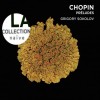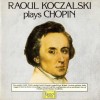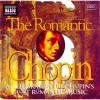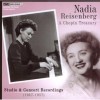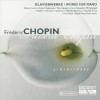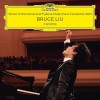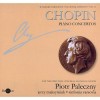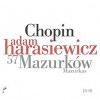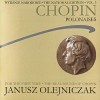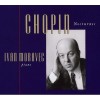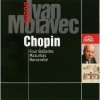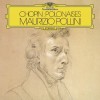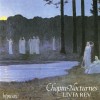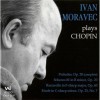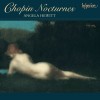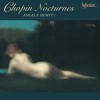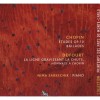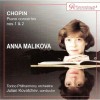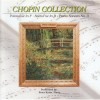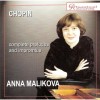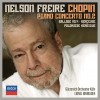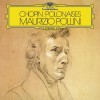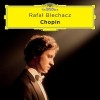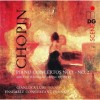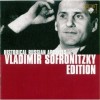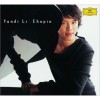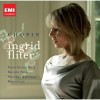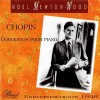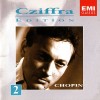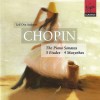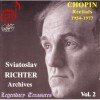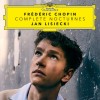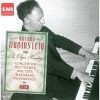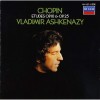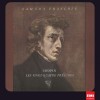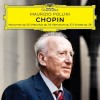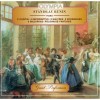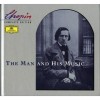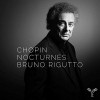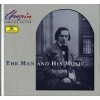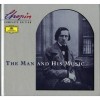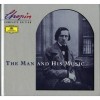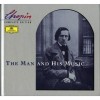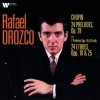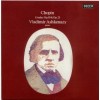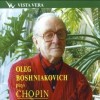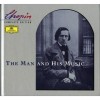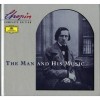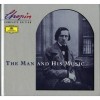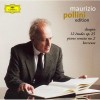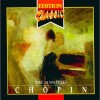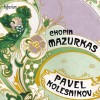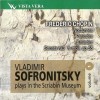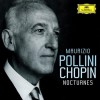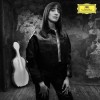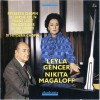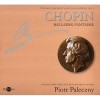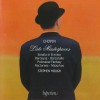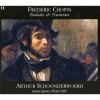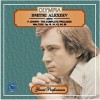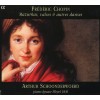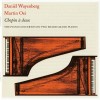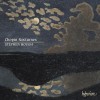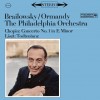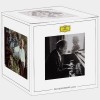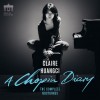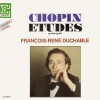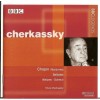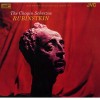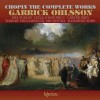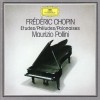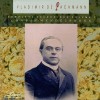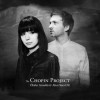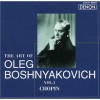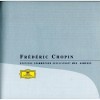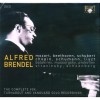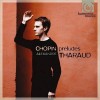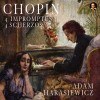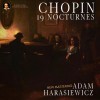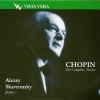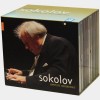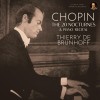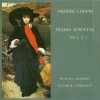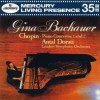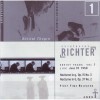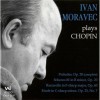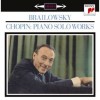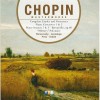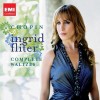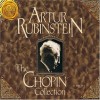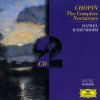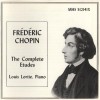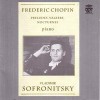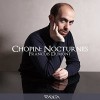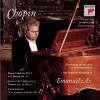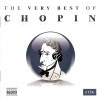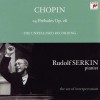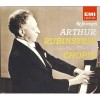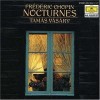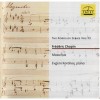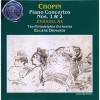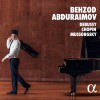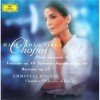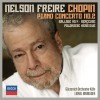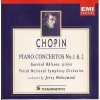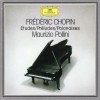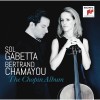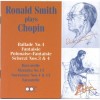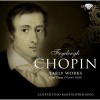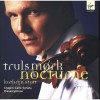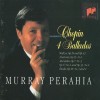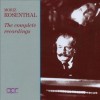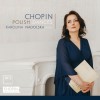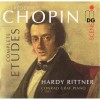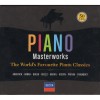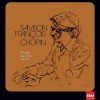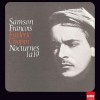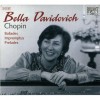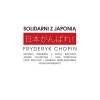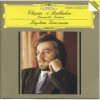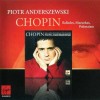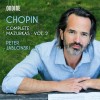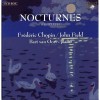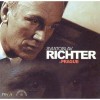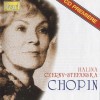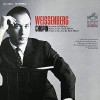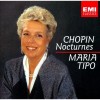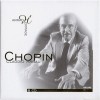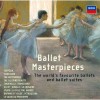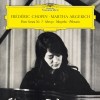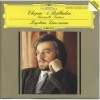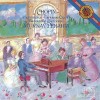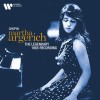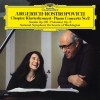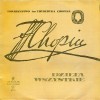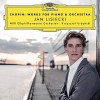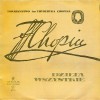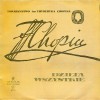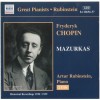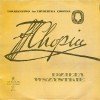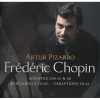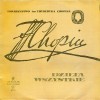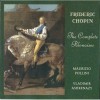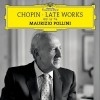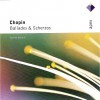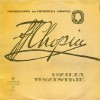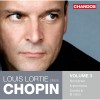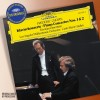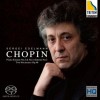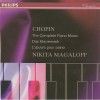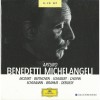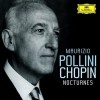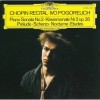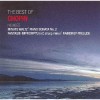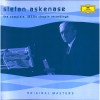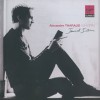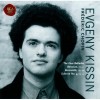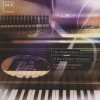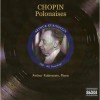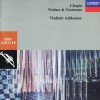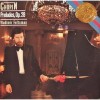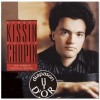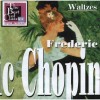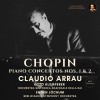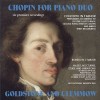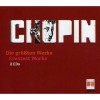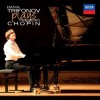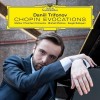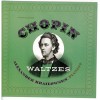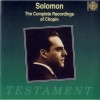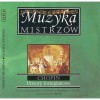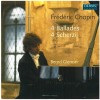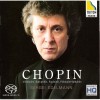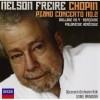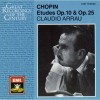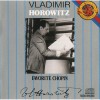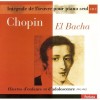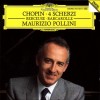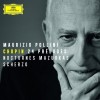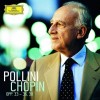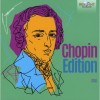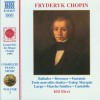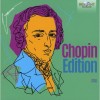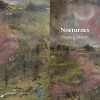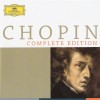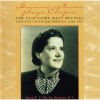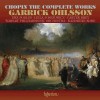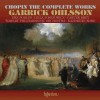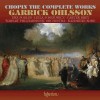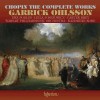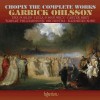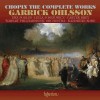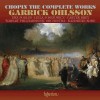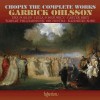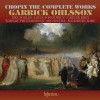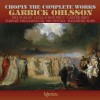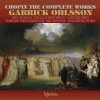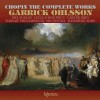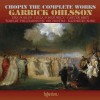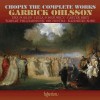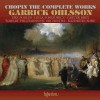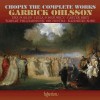| Country: | Poland |
| Period: | Romantique |
Biography
The birthplace of Frédéric Chopin is a town with the name Żelazowa Wola, situated fifty kilometers from Warsaw, which at that time belonged to the Duchy of Warsaw. Mikołaj Chopin, his father was a Frenchman by origin, and was born in Lorraine. In 1787 the sixteen year old Chopin moved to Poland and served in the National Guard in the period of Kościuszko’s Uprising. He worked subsequently as a private teacher to the children of rich aristocrats, including the Skarbeks; the female representative of this impoverished family, Justyna Krzyżanowska, he would later marry.
The famous Union General of the United States Włodzimierz Krzyżanowski also originated from the family of Justyna's brother.
Justyna and Mikołaj got married in the 16th-century Brochów basilica, a place where their son will later be baptized. Their second child Fryderyk Franciszek Chopin was born in 1810. Some specialists argue as to the true date of his birth: the church document states it as 22 February, while the family records put it as 1 March. The composer himself would give March 1 as his birthday.
In the period between 1817 and 1827 the Chopins would live next to the grandiose Kazimierz Palace in the University building in Warsaw, which is now embellished with Chopin’s profile.
In the autumn of 1810, the family went to reside on the grounds of the Saxon Palace, where Chopin’s father worked as a French-language teacher. Frédéric was at that time only seven months old. Since 1817, Chopin’s father combined his work at the Palace with his duties at the Lyceum of Warsaw, where he began teaching as well. The family was offered spacious apartment in the same building, which housed the University. Future composer would attend the Lyceum in the period between 1823 and 1826.
In spite of his father’s occupation and French origin, his son would never speak French as well as the Frenchmen, Polish culture, language, and spirit prevailed in their home. George Sand once even said that Chopin was even "more Polish than Poland", a phrase borrowed by Louis Enault, Chopin’s biographer.
Each member of the Chopin family had an artistic inclination. His father played the violin and flute; and his mother gave music lessons to the boys at the boarding house for aristocrats, which was operated by the Chopins. She also played the piano and the boy would often listen to his mother playing. Chopin's contemporary and a musician Józef Sikorski recalled in his Memoir (Wspomnienie Chopina), that Chopin displayed his deepest and most sincere emotions when Chopin’s mother was playing this instrument. Six year old Chopin was trying to imitate what he had heard from his mother, and even to make his own melodies. One way or another, from the early childhood he was surrounded by creative atmosphere, and became acquainted with classical music. His older sister Ludwika (English"Louise") gave Chopin his first piano lessons.
The respected elderly Wojciech Żywny became his first professional piano teacher. Chopin always spoke of Żywny with great respect, in spite of the fact that his own skills very soon surpassed those of his teacher. "Little Chopin" started giving public concerts at the age of sevenб thus prompting comparisons with the young Mozart and Chopin’s contemporary, Beethoven.
The seven-year old boy composed several Polonaises, in B-flat major and G minor. The latter was edited at the workshop of an engraver, composer, and director of the organists' school Izydor Cybulski, who was also one of the rare music publishers in the country. The former became known as a manuscript preserved by Mikołaj Chopin. Chopin’s Polonaises were believed to be rivals not only of the famous modern Polish Polonaises, composed by the renowned and reputed composers, but of Michał Kleofas Ogiński’s works as well. In 1821 Chopin created a new Polonaise presented to Żywny as a name-day gift. It showed a substantial enhancement of harmonic and melodic invention and of performing technique.
The eleven year old Chopin played at the opening of Polish parliament (the Sejm), in the presence of Russian Tsar Alexander I.
From the early childhood Chopin would display signs of intelligence, and was said to take notice of everything and make use of it for his development. As a child, he showed outstanding abilities in sketching and observation, sense of humor and keen wit, as well as talent for mimicry. Once his school teacher was very pleasantly surprised when Chopin introduced a superb portrait made for the teacher.
Chopin was at that time frequently invited to the Belweder Palace, the residence of Constantine Pavlovich, the Russian Grand Duke. Chopin would play there with his son and entertain the family with his charming piano-playing. (Years later, Constantine Pavlovich would have to flee the Palace, just in time to avoid the rage of the Polish cadets, who crossed the Royal Baths Park aiming to seize the duke, during the 1830 Uprising). In Our Intercourse (NaszeVerkehry) Ursyn Niemcewicz gave credit to the popularity of the Little Chopin; the author introduced Chopin as a leitmotif of the dialogues.
Chopin would spend his vacations at the small village in Szafarnia (invited by the member of royal family Antoni Radziwiłł). There he took liking to folk melodies which he transmuted into compositions of his own. Chopin wrote some letters from Szafarnia, which later became known as "Szafarnia Courier" letters. The letters addressed to his family were extremely amusing, they contained critic on Warsaw newspapers, and revealed Chopin’s literary talent.
There is an anecdote describing Chopin, who would lull the children to sleep with a lullaby (berceuse), and then woke them up with a high-pitched chord.
The boy was taught at home till he was thirteen years of age. In 1823 he joined the Warsaw Lyceum, but continued studying the piano under the direction of Żywny. In 1825 Chopin became known as “the best pianist of Warsaw” after his successful improvisation of Ignaz Moscheles’s composition.
At the end of 1826, he started a three-year course at the Warsaw Conservatory with the famous composer Józef Elsner.
Chopin might have contacted Elsner in 1822; no doubt Elsner kept giving Chopin informal guidance, and in 1826, he officially started the study of composition, music theory, and figured bass with Elsner. His teacher was among those numerous admirers who noticed his "musical genius" and "remarkable talent". As well as Chopin’s previous teacher Żywny, Elsner would observe, rather than influence or direct, the development of his pupil’s blossoming talent. Elsner let Chopin to develop and mature according to the unique laws of his nature and did not constrain Chopin with academic, narrow, outdated rules.
In the period between 1827–30, the Chopins lived in the south wing of the Krasiński Palace; that was Chopin’s last residence before he left Poland forever.
Their place of residence situated across the street from the University (now there is the Warsaw Academy of Fine Arts, where poet and artist Cyprian Norwid studied painting in 1837-39; he would dedicate one of his poems to the great composer and call it "Chopin's Piano”.) The great composer lived here until 1830, and he never returned here after his departure from Warsaw.
In 1829, a portrait painter Ambroży Mieroszewski draw a collection of five portraits of the Chopins (Emila, the youngest daughter passed away in 1827): the composer’s parents, his sister Ludwika, younger Izabela, and the composer himself (that was believed to be his first portrait.) Unfortunately, the portraits did not survive during World War II, but we can still witness its copies and black-and-white snapshots of the Chopins at the museums. In 1913, the historian Édouard Ganche wrote that the painting of a renowned composer displayed the first signs of tuberculosis. His skin was very pale, he had a distinct Adam's apple and sunken cheeks, his ears had a form characteristic of consumptive patients. His younger sister died of this disease when she was only fourteen years old, and Chopin’s father succumbed to tuberculosis in 1844.
Chopin’s biographer and musicologist Zdzisław Jachimecki believes that Chopin’s juvenile works are incomparable to any other composer of the same age because of the unique nature of his works. The renowned Mozart, Beethoven and Bach were still apprentices at the age, when Chopin was acclaimed by peers and the representatives of royal families, and regarded as a master who was destined to point the path of the incoming age.
The composer never gave any thematic titles to the instrumental compositions, but simply marked them by number and genre. His works were, nevertheless, frequently inspired by sensual and emotional experiences of his life. For example, he was inspired by a young attractive singer at the Conservatory of Warsaw, who was substituted by another opera singer Konstancja Gładkowska. Chopin woiuld write to Tytus Woyciechowski, his friend, which works, or passages were written under the influence of his erotic fantasies. Chopin’s artistic soul was enriched as well by friendships with the representatives of the intellectual and artistic world of the capital. Among them rated such outstanding personalities, as Julian Fontana, Maurycy Mochnacki, and Józef Zaleski.
In the autumn of 1828, the composer joined the family friend Feliks Jarocki in his trio to Berlin. The zoologist Jarocki wanted to attend the scientific convention there. Chopin, in turn, entertained himself with goings out to the opera houses, where he enjoyed some unfamiliar operas, performed under the direction of Gaspare Spontini. He also attended several concerts, and got acquainted with Felix Mendelssohn, Carl Friedrich Zelter and some other celebrities. On their way back, Chopin was invited by Prince Antoni Radziwiłł, himself an aspiring cellist and accomplished composer. Chopin devoted Polonaise for Piano and Cello to the governor and his daughter Wanda.
In 1829 Chopin heard the performance of Niccolò Paganini and encountered Johann Nepomuk Hummel, the well-known German composer and pianist. The same year, several weeks after his graduating from the Warsaw Conservatory, Frédéric Chopin brilliantly debuted in Vienna. He participated in two piano concerts and got numerous favorable reviews (not all the reviews were favorable though, some would criticize the "small tone" Chopin drew from his instrument). In December 1829, Chopin gave a concert at the Merchants' Club, participating with the Piano Concerto No. 2 in F minor. On March 17, 1830, Chopin premiered the Piano Concerto No. 1 in E minor at the Piano Concerto No. 1 in E minor. In the period between 1829 and 1832, he set himself to writing Études, his first attempt in this genre.
The success of this period offered him prospects as a composer and performer of European scale. Konstancja Gładkowska gave him a ring as a means of exceptional favor, and he would carry with him a cup made of silver, which contained soil from Poland. With no definite aim, as he later claimed, he started writing Jachimecki.
Meanwhile, the November Uprising happened in Warsaw, and Chopin’s travelling companion and friend, Tytus Woyciechowski, decided to return to the capital to enlist. The composer remained in Vienna and decided to devote his time and creative efforts to Jachimecki. His state of mind can be described as disappointment and nostalgia. He was really afflicted by nostalgic thoughts, trying in vain to give concerts and publish his works. At the same time Chopin got mature and acquired spiritual profundity, turning from a poet to national bard capable of intuiting the nation’s past and present, predicting Poland’s future. Now, at the distance he was able to see his native land from proper perspectives, and understand her beauty and greatness, the heroism and tragedy of her vicissitudes. Chopin would learn about the crush of the uprising during his trip to Paris. And he poured "blasphemies and profanities " in Polish language into his little journal which was the repository of his secret thoughts till the rest of his life. Chopin’s Scherzo in B minor, and his "Revolutionary Étude", in C minor render the outcry of a heart tormented with martyrdom.
Chopin came to Paris in late September 1831, full of doubt whether it was a proper step to come here for residence. In order to easy his integration into the local music community, he started taking lessons from an outstanding pianist player Friedrich Kalkbrenner. In 1832 Chopin participated at a concert, and mad a wider public bow to his extraordinary talent. The authoritative critic and musicologist François-Joseph Fétis from the Revue musicale introduced Chopin as an extraordinary talented young man, who had no models to take after, and who introduced a fully unconventional understanding of piano music and extravagant original ideas, that have long been sought after… Robert Schumann, who reviewed his La ci darem la mano variation in 1831, claimed for everybody to take off their hats and greet a genius.
After his Paris début in winter 1832, Chopin doubted whether his light-handed technique would be suitable for large concert halls. Some time later that year, Chopin came to know the banking family Rothschild, whose patronage and financial assistance opened doors for Chopin to other salons.
In the capital of France Chop in came to know many artists and other representatives of distinguished company, in addition to the possibility to achieve celebrity and exercise his talent as a distinguished teacher. He would teach piano to students from Europe and earn a handsome sum for his tutorials. Chopin got acquainted with Franz Liszt, Berlioz, Ferdinand Hiller, Vincenzo Bellini, Heinrich Heine, Felix Mendelssohn, Eugène Delacroix, Alfred de Vigny, Charles-Valentin Alkan, and Prince Adam Jerzy Czartoryski.
However, Chopin gave public concerts in Paris very rarely. In later years the composer would give an annual performance at the venue Salle Pleyel, which could house three hundred listeners. Chopin played more often at saloons, on social gatherings of the literary elite, artists, and aristocrats of the period. One way or another, he preferred to perform his renowned compositions in his Parisian apartment for the circles of his friends and acquaintances. He did not acquire the title of the travelling virtuoso because of his health that was very precarious indeed, and he seldom left the capital but for the single concert in Rouen. Thanks to his high income from composing and teaching, Chopin was freed from concert-giving, and actually had neither wish nor inclination to gain world wide fame as a travelling celebrity. Arthur Hedley once took notice that Chopin managed to acquire the reputation of the highest order in spite of his minimum public performances, in general, he gave about 30 concerts during Chopin’s lifetime.
In 1835, he went to German Carlsbad, where he met with the parents, it was to become their last meeting. On his way to Paris, Chopin encountered the Wodzińskis, the family he had come to know in Warsaw. Five years before this meeting, Chopin had fallen in love with their daughter, now 16 year old beautiful Maria. She was a very intelligent, artistically talented, and charming young lady. And in September 1836, on returning to Dresden (Germany) after his vocation at Marienbad, he had spent with the Wodzińskis, Chopin proposed to Maria. The girl accepted the proposal, and the future marriage was in principle approved by her parents, but due to Chopin's tender health (once in winter season of 1835–1836 Chopin had experienced a grave illness and it had even been rumored in Warsaw that the young composer had died) and the girl’s age (she was at the time only sixteen years old) it was decided to postpone the wedding. Their engagement remained in secrecy and in the long run it never finished in marriage. The composer would place all the letters from the young bride and Countess Wodzińska to the special envelope, and would write the words in Polish "My sorrow" ("Moja bieda").
Chopins feelings were rendered in the Waltz La Valse de l'Adieu, which was composed on the day of the composer’s departure from Germany in September. On arrival to Paris he wrote the Étude in F minor which later contributed to the Op. 25 cycle, and would call it “a portrayal of Maria's soul." In addition to this he forwarded Maria several songs set to the poetry of Polish Romanticists Adam Mickiewicz, Józef Zaleski and Stefan Witwicki.
After the wreck of Chopin's plans to marry Maria Wodzińska, Chopin found inspiration and consolation in the image of Delfina Potocka, a Polish countess, to whom he displayed romantic interest and who became his muse for a period of time. The renowned "Minute Waltz" was devoted to Delfina Potocka.
During his life in Paris Chopin participated in a number of concerts. Among the participants there were many lights of composition elite, that it provides an idea of the abundance and richness of artistic life in this period. For example, Chopin, Hiller and Liszt took part in a concert, where they performed Bach's concerto for 3 harpsichords; in early spring 1838, Chopin, Adolphe Gutman, Pierre Joseph Zimmerman, and his pupil Alkan participated with Alkan's composition for 8 hands, of the 7th symphony of Ludwig van Beethoven.
Chopin also took part in the composition of Hexaméron by Franz Liszt; his variation of Bellini's theme was the sixth and the last among the most prominent.
Once, at a party in 1836, at Marie d'Agoult’s house (who was into the bargain Franz Liszt’s mistress) Chopin became acquainted with the French feminist and prolific author who had a pseudonym George Sand (the Baroness Dudevant). Among her romantic involvements rated Prosper Mérimée, Jules Sandeau, Louis-Chrystosome Michel, Alfred de Musset, Félicien Mallefille, Pierre-François Bocage, and Charles Didie.
At first Chopin felt strong aversion for the author, and even told Ferdinand Hiller about repulsion he felt to the woman, and doubted whether Sand was really a woman. Sand, on the contrary, in her 32 page letter to Wojciech Grzymała, who was their mutual friend, declared her strong feelings for Chopin. In this letter she contemplated whether to stop her current relations and start an affair with the composer, and even attempted to gauge Chopin’s relations with Maria Wodzińska, though without an attempt to interfere. In the summer of 1838, Sand's and Chopin's involvement was no more a secret.
Sand and Chopin experienced an unpleasant episode while being together on Majorca (the winter of 1838-1839), where they planned to improve the composer’s deteriorating health. The couple was accompanied by two children of George Sand. One way or another, on disclosure that the guests were not married, the deeply religious local people of Majorca displayed the hostility and made it difficult for a couple to find proper lodgings; in the long run, the foursome were compelled to find refuge in a picturesque yet cold and stark Carthusian monastery of Valldemossa.
The composer had problems in receiving his piano as it was stuck at the customs, and he could not get hold of it. The Pleyel piano came from Paris at the end of December, but the officials didn’t let Chopin have his instrument until some huge sum of money was payed. In his letter the composer showed signs of indignation at the amount of money he was supposed to pay. Meanwhile, Chopin exercised his great talents on a dilapidated piano, and might have composed some precious pieces of music.
On 3 December, Chopin complained about his poor health and several local doctors had an opportunity to examine the renowned patient. According to Chopin’s words, he was as sick as a dog during the last weeks. Doctors’ incompetence though was striking indeed. He would write in his letters that the first of the medicos said that Chopin was going to die; the second prophesied that he was breathing his last, and the third told he was already dead.
On January 4, 1839, Sand gave her consent and payed out half of the amount of money to have the piano released from the customs. It was delivered to their house the following day, and the composer had an instant opportunity to make use of the long-awaited instrument. For the next 5 weeks he would finish some of his works: a revision of the Ballade No. 2, Op. 38; some Preludes, Op. 28; two Polonaises, Op. 40; the Mazurka (Op. 41); the Scherzo No. 3, and he might have revisited the Sonata No. 2, Op. 35. The time spent on Majorca is believed to be one of the most fruitful periods in composer’s life.
The winter weather had such a devastating effect on Chopin’s health and lung disease that the whole party had to flee the island in order to save Chopin’s life. The musical instrument became the obstacle in this situation, but George Sand contrived to sell the French piano to the Canuts (the family who are now in charge of the composer’s legacy in Majorca and of the Valldemossa cell-room museum.)
Four people moved from Barcelona to Marseille, where they resided for several months until Chopin’s recovery. In May 1839, the party moved to the estate at Nohant that belonged to George Sand and to spend there the summer months. In autumn they headed to Paris where they for some time lived apart, but soon the composer woiuld leave his flat at 5 rue Tronchet and join Sand at 16 rue Pigalle. They divided their time in the period of 1839 - 1842 between their residence in Paris and summer house at Nohant. Later, in 1842, the party moved into a new flat in the Square 'Orléans, where they lived in the neighboring buildings.
Chopin did not only play the piano. At Adolphe Nourrit’s funeral he executed Franz Schubert's organ transcription of the song Die Gestirne. Although piano is considered to be his most favorite musical instrument, he played the organ at this particular occasion.
During summer months Nohant, Chopin enjoyed tranquil and productive days that allowed him to concentrate on his work. He executed many compositions, including the Polonaise in A flat major, Op. 53, and the famous "Heroic". Due to George Sand who offered to the ancestors the most profound description of the composer’s creative processes, we know of the way Chopin created his masterpieces. She described how his inspirations would rise and then work out, the creative impulses shifted by torments, accompanied by complaints and weeping, with multiple changes introduced in the initial idea- only to return to the first concept. Sand once described the creative process of her beloved composer executed during the visit of their friend Delacroix.
Chopin is the instrument, quite unmindful of someone’s presence. He sets himself on a casual improvisation, but then stops. Delacroix urges him to continue what he had started, but Chopin says that nothing is going to come out of it….nothing but shadows, shapes, reflections which will not stay fixed. Chopin says that he is attempting to find the proper colour, but he can’t even find a form… Delacroix insists that it is not possible to find one thing without the other, that both come together. Chopin asks his friend, what if moonlight will be the only thing he finds. Then one has to find the reflection of the reflection, was the answer. This idea seems to console the divine composer and he tries again, gradually more and more confident with the shape. Step by step quiet colours show themselves, corresponding of the faint modulations that we hear in our ears. Unexpectedly the note of blue appears, and we are surrounded by the azure night. The clouds gather fantastic shapes and become evident in the sky. They surround the moon which casts transparent discs, and awakes the magic night colours. We imagine the summer night and sit still waiting for the magic song of a nightingale...
As Chopin’s illness progressed, George became more of the nurse to the composer and less of the beloved woman who became for her the “third child”. But she was not a pure angel itself, her nursing duties often palled on her. In later years she would remain a devoted friend to Chopin, but would often express affectionate impatience in the letters to other people. She would call Chopin the "little angel,” "child," her "beloved little corpse," or the "sufferer".
In 1845, a further deterioration interfered into his relations with George Sand. The relations were even more soured by problems connected with the romance between her daughter and Jean Clésinger, the young sculptor. In 1847, George Sand published the novel Lucrezia Floriani, featuring the well to do actress and a sick prince. The characters could be compared with Chopin and Sand; and the story itself didn’t seem to be uncomplimentary to the composer, who could not but notice the allusions implied. The following year Chopin would not go to Nohant. Their mutual friends tried their best to reconcile the couple, but the man would not yield.
Pauline Viardot, the mezzo-soprano belonged to the exquisite company of their mutual friends. George Sand devoted the 1843 novel on Viardot, and the party used to spend pleasant hours at Sand’s summer house in Nohant. In addition to being a remarkable opera singer, Pauline was an outstanding and passionate pianist; once she even wanted to take up a career of a piano player, and took lessons with Anton Reicha and Liszt. Her infatuation of Chopin was based primarily on their similar temperaments and artistic esteem. She often played with Chopin; the composer recommended her different piano technique and helped her to write some songs on the basis of the mazurkas’ melodies, Chopin in turn picked up from her first-hand basics of Spanish music.
The relations between Chopin and Sand initiated in 1837 were brought to an end in 1847, with no formalities or dramatics for both parties.
Wojciech Grzymała, the count who followed the romance between two people to their breach in 1847 once said, that providing the great Chopin didn’t encounter Sand who spoiled his being, he would live as long as his friend Cherubini. The composer died at 39, while his friend Cherubini celebrated his eighty-first birthday and died in Paris in 1842. The two men are both buried at Père Lachaise Cemetery only 4 meters apart.
The composer’s popularity waned, as did his pupils. In 1848 Chopin gave his last concert in Paris. He left for London the same year when the 1848 Revolution was about to start in the capital. There he participated at a number of concerts and receptions of the aristocracy. Afterwards he aimed at Scotland, residing at the castle of Chopin’s great admirer and former pupil Jane Wilhelmina Stirling, who lived there with her sister Mrs. Katherine Erskine. The former proposed to Chopin; but he, anticipating his death, declined the proposal in a mild form, appreciating his freedom more than the possibility to live on his wife’s means.
In the autumn of 1848, while his sojourn at Dr. Adam Łyszczyński’s, Chopin set himself to write his last will, which he humorously commented as “a disposition about my staff, in case I drop dead somewhere.” In this period Chopin thought constantly of his parents and sister, and would play the adaptations of folk music during his stay at Miss Stirling's ancient castle.
The last public concert was given by the composer on 16 November 1848, at Guildhall in London, when in a display of his patriotic feelings he would play for the virtue of Polish refugees. Chopin’s participation turned out to be an unintentional mistake, as the participants were more inclined to dance and refresh themselves, than listen to the mourns of an insulted patriot. His piano artistry cost Chopin much physical discomfort and emotional effort into the bargain.
In late November, the composer came back to Paris. The whole winter was passed in grave illness, but he would still continue to make visits on his friends, for example, the Polish poet Adam Mickiewicz, whose nerves he had been soothing with the piano playing. Chopin ceased to give private tutorials, but he set his mind to composition. He was in law water financially and lacked money even for the physicians, let alone other essential things. Most of his belongings and valuable furnishings had eventually been sold out.
Chopin longed some company and invited his sister to come and reside with him in a sunny and beautiful apartment in Paris. There the great Polish composer would die in October 17, 1849 at about 2 o’clock.
Many people would later claim to be present at the death of the composer, as if it would give them additional scores in the course of the history. According to Tad Szulc, people thought it could grant one social and historical cachet. Among those who were actually present at his death were Chopin’s sister Ludwika, who came to live with him on her brother’s request, Princess Marcelina Czartoryska, the daughter of George Sand Solange with the husband, Chopin’s former pupil and a close friend Adolf Gutmann, Thomas Albrecht, and Chopin’s confidant, a Catholic priest Aleksander Jełowicki.
On the day of his death, Auguste Clésinger, would make the composer's death mask as well as the casts of the hands. Following Chopin’s testament, (which rendered a wish that was engineered by his fear not to be buried alive), his heart was extracted from the body and placed in a container with alcohol (presumably brandy). Ludwika then brought it to the Polish capital, where it found refuge inside the pillar of the Holy Cross Church. The pillar bore the inscription from The Bible (Matthew VI:21). The church is situated not far from his last residence in Poland at Krakowskie Przedmieście 5. His heart has been kept at the church with the only exception of the period of World War II, when it was replaced and kept safe for a period of time. The church was destroyed during Warsaw Uprising of 1944, but became later rebuilt by the descendants. Chopin’s heart is still kept within the holy building.
The funeral was conducted at Parisian Church of the Madeleine, on 30 October 1849; nearly 3000 people came to his funeral. According to his wish, Mozart's Requiem was to be performed at the exequy. There was only one problem connected with its performance. The point is that the composition had parts for female voices, and the church had never before permitted female singers to participate in its choir. Because of this confusion the funeral had to be postponed for almost 2 weeks until they finally relented, with the only condition that women would remain hidden behind a curtain of black velvet.
The bass Luigi Lablache was among the soloists at the Chopin’s funeral. He had also sung the same composition at Beethoven's exequy, and performed a composition at Bellini's funeral. Even Pauline Viardot came to the funeral, but for George Sand who were not to be seen. Among the Chopin’s works performed were Préludes No. 6 in B minor and No. 4 in E minor.
Chopin found his final refuge at Père Lachaise Cemetery. The Funeral March from his Sonata No. 2 in B flat minor was executed at the graveside.
Numerous visitors are attracted by Chopin’s grave with its monument created by Clésinger, and is decorated with fresh flowers irrespective the time of year.
In the 20th century (2008) there arose a controversy over the composer’s death. The point at issue was the reason of Chopin’s death. It had conventionally been regarded that the composer died of tuberculosis. But the scientists were preoccupied with the idea of his death from cystic fibrosis, a genetic disease whose full clinical spectrum was recognized only by 1930s. The Polish officials, nevertheless, declined the scientists’ request to extract Chopin's heart for DNA testing.





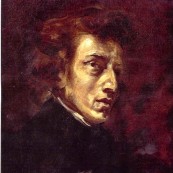

![Russian legends - Emil Gilels [16 CD]](http://static.classicalm.com/repository/collection-cover/small/261-img1318115683212190.jpg)
![Russian legends - Evgeny Kissin [9 CD]](http://static.classicalm.com/repository/collection-cover/small/265-img1318196902541222.jpg)
![Russian legends - Viktor Tretiakov [6 CD]](http://static.classicalm.com/repository/collection-cover/small/271-img1318800770253179.jpg)
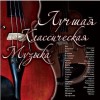
![Steinway Legends - Maurizio Pollini [2 CD]](http://static.classicalm.com/repository/collection-cover/small/239-img1316863332613202.jpg)
![Steinway Legends - Arturo Benedetti Michelangeli [2 CD]](http://static.classicalm.com/repository/collection-cover/small/231-img1316813313531382.jpg)
![Steinway Legends - Vladimir Ashkenazy [2 CD]](http://static.classicalm.com/repository/collection-cover/small/243-img1316892092545040.jpg)
![Steinway Legends - Claudio Arrau [2 CD]](http://static.classicalm.com/repository/collection-cover/small/233-img1316815171145336.jpg)
![Steinway Legends - Wilhelm Kempff [2 CD]](http://static.classicalm.com/repository/collection-cover/small/247-img1316898358255855.jpg)
![Steinway Legends - Emil Gilels [2 CD]](http://static.classicalm.com/repository/collection-cover/small/235-img1316856590105306.jpg)

![Steinway Legends - Martha Argerich [2 CD]](http://static.classicalm.com/repository/collection-cover/small/237-img1316861995833914.jpg)
![Top 100 der Klassik [CD 3 of 5]](http://static.classicalm.com/repository/collection-cover/small/1366-img1372593555699508.jpg)
![Deutsche Grammophon Classic Gold [CD 3 of 3]](http://static.classicalm.com/repository/collection-cover/small/1316-img1361384204300956.jpg)
![Top 100 der Klassik [CD 4 of 5]](http://static.classicalm.com/repository/collection-cover/small/1367-img1372594763111487.jpg)
![Top 100 der Klassik [CD 5 of 5]](http://static.classicalm.com/repository/collection-cover/small/1368-img1372595835213275.jpg)
![Top 100 der Klassik [CD 1 of 5]](http://static.classicalm.com/repository/collection-cover/small/1364-img1372589941705257.jpg)
![Top 100 der Klassik [CD 2 of 5]](http://static.classicalm.com/repository/collection-cover/small/1365-img1372592354874210.jpg)
![Deutsche Grammophon Classic Gold [CD 2 of 3]](http://static.classicalm.com/repository/collection-cover/small/1315-img1361382127512512.jpg)


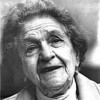
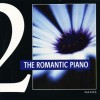
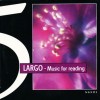
![The Top 100 Masterpieces of Classical Music 1685-1928 [CD5of10]](http://static.classicalm.com/repository/collection-cover/small/1357-img1372443663163006.jpg)
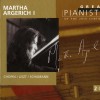
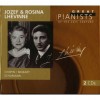
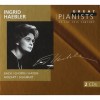
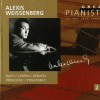
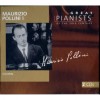

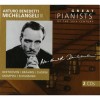

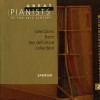
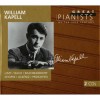
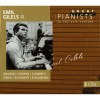

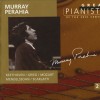
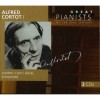
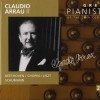
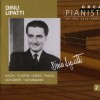
![Russian legends - Lazar Berman [7 CD]](http://static.classicalm.com/repository/collection-cover/small/263-img1318187682202830.jpg)
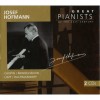
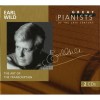
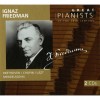
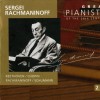
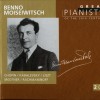

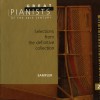
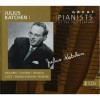
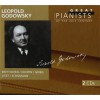


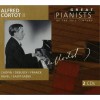
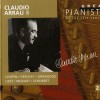
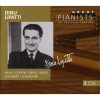
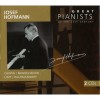
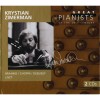
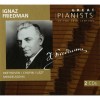

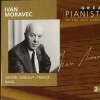
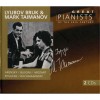

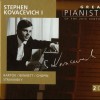
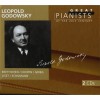
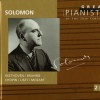
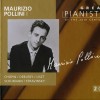
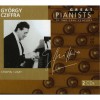
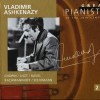
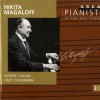
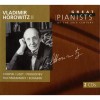
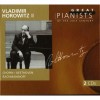

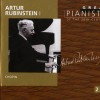
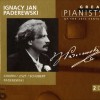
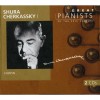
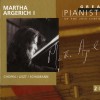
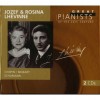
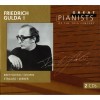

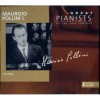
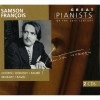
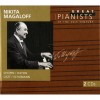
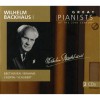
![Russian legends - Daniel Shafran [7 CD]](http://static.classicalm.com/repository/collection-cover/small/277-img1319146356180506.jpg)

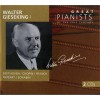
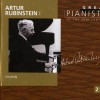
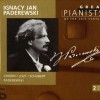
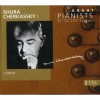



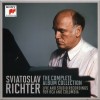
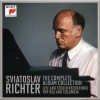
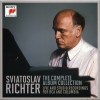
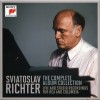

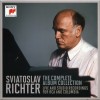
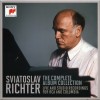


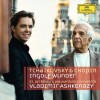

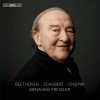
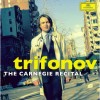
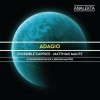
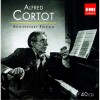
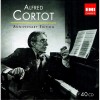
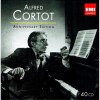
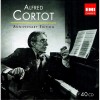
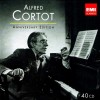
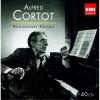
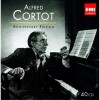
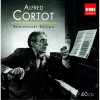
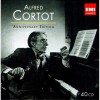
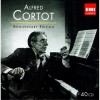
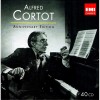
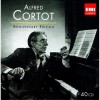
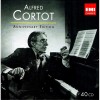

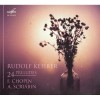
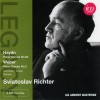
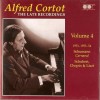
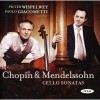
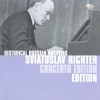
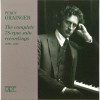
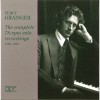

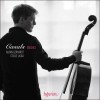
![Martha Argerich Edition: Chamber Music [CD2of8]](http://static.classicalm.com/repository/disk-cover/small/3570-img1403957533746504.jpg)

![Martha Argerich Edition - Solos & Duos [CD1of6]](http://static.classicalm.com/repository/disk-cover/small/3581-img1404476538787570.jpg)
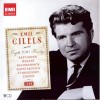
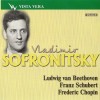


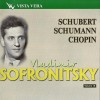
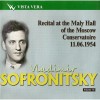
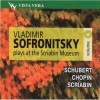

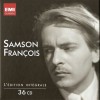
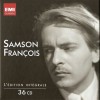

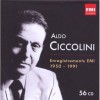
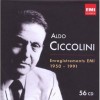
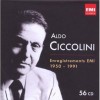
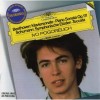
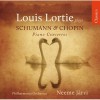
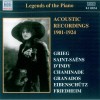


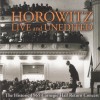

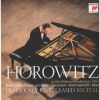

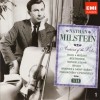

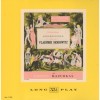
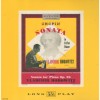
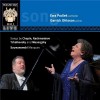
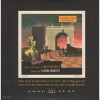
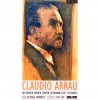
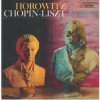
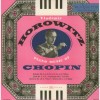



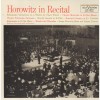
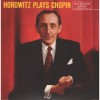
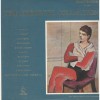
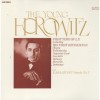
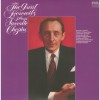
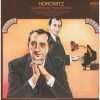
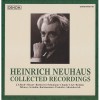
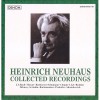
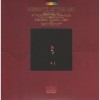
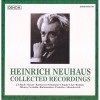
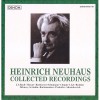

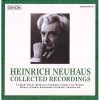
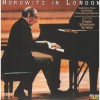
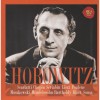
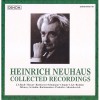
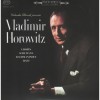
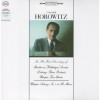
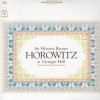

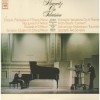
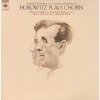
![Martha Argerich - The Collection 2 - The Concerto Recordings [CD2of7]](http://static.classicalm.com/repository/disk-cover/small/3563-img1403953852176576.jpg)
![Martha Argerich - The Collection 2 - The Concerto Recordings [CD4of7]](http://static.classicalm.com/repository/disk-cover/small/3565-img1403954576777649.jpg)
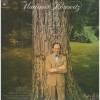
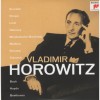



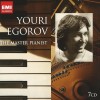
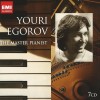
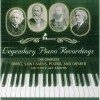
![The 100 Most Beautiful Melodies [CD 2 of 6]](http://static.classicalm.com/repository/disk-cover/small/2911-img1361460313445296.jpg)
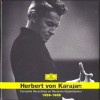
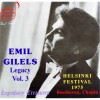
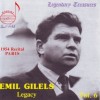

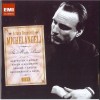
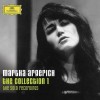
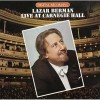
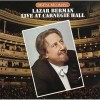
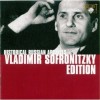
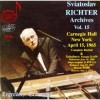
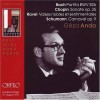
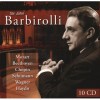
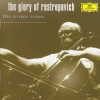

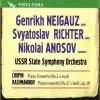

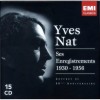
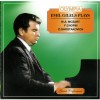
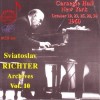
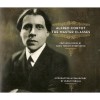
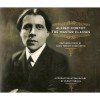
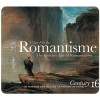
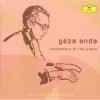
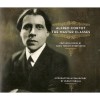
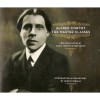
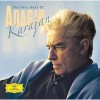
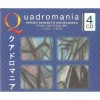
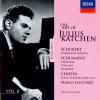

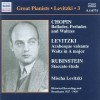
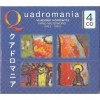
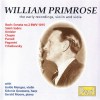
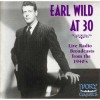
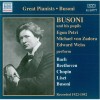
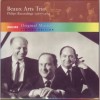

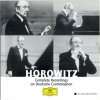
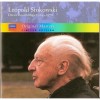
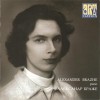
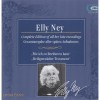
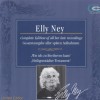
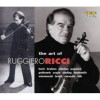
![Helene Grimaud - The Piano Collection [CD3of5]](http://static.classicalm.com/repository/disk-cover/small/3555-img1403790709181962.jpg)
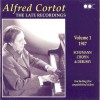
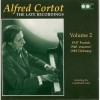
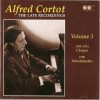
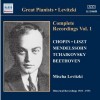
![Rostropovich - Mastercellist [CD2of2]](http://static.classicalm.com/repository/disk-cover/small/3702-img1407155736668324.jpg)
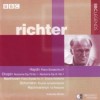
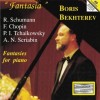



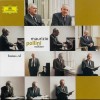
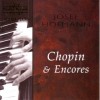
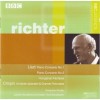
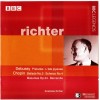

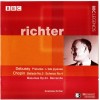
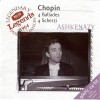
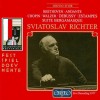
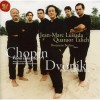
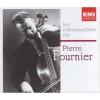
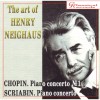
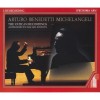
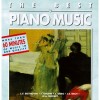

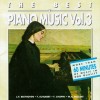
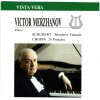
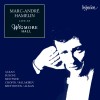

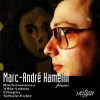
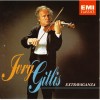
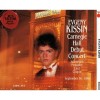
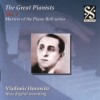
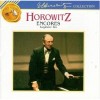
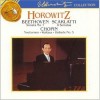
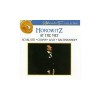


![Chopin - The Piano Works [CD 1 of 11]](http://static.classicalm.com/repository/disk-cover/small/2899-img1360952487795851.jpg)
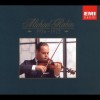
![Chopin - The Piano Works [CD 2 of 11]](http://static.classicalm.com/repository/disk-cover/small/2900-img1360953180687112.jpg)
![Chopin - The Piano Works [CD 3 of 11]](http://static.classicalm.com/repository/disk-cover/small/2901-img1360953946248843.jpg)
![Chopin - The Piano Works [CD 4 of 11]](http://static.classicalm.com/repository/disk-cover/small/2902-img1360958207789683.jpg)
![Chopin - The Piano Works [CD 5 of 11]](http://static.classicalm.com/repository/disk-cover/small/2903-img1360960298713572.jpg)
![Chopin - The Piano Works [CD 6 of 11]](http://static.classicalm.com/repository/disk-cover/small/2904-img1360960865672785.jpg)
![Chopin - The Piano Works [CD 7 of 11]](http://static.classicalm.com/repository/disk-cover/small/2905-img1360961391261379.jpg)
![Chopin - The Piano Works [CD 8 of 11]](http://static.classicalm.com/repository/disk-cover/small/2906-img1360962359639974.jpg)
![Chopin - The Piano Works [CD 9 of 11]](http://static.classicalm.com/repository/disk-cover/small/2907-img1360962944416678.jpg)
![Chopin - The Piano Works [CD 10 of 11]](http://static.classicalm.com/repository/disk-cover/small/2908-img1360963796348738.jpg)
![Chopin - The Piano Works [CD 11 of 11]](http://static.classicalm.com/repository/disk-cover/small/2909-img1360964430380731.jpg)

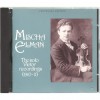
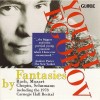
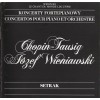
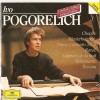
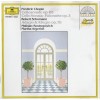
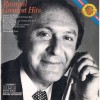
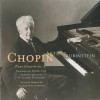
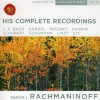
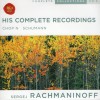
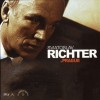
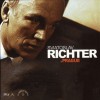
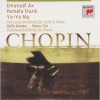
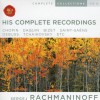
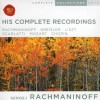

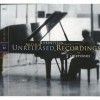

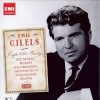
![Sviatoslav Richter - The Beginning of the Legend [4 CD]](http://static.classicalm.com/repository/disk-cover/small/823-img1315991321531276.jpg)
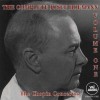
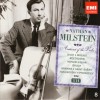
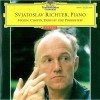
![The Complete Josef Hofmann, Volume 2 [2 CD]](http://static.classicalm.com/repository/disk-cover/small/827-img1316005912356728.jpg)
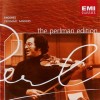
![The Complete Josef Hofmann, Volume 3 [2 CD]](http://static.classicalm.com/repository/disk-cover/small/829-img1316006934873331.jpg)

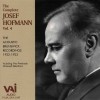
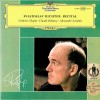
![The Complete Josef Hofmann, Volume 5 [2 CD]](http://static.classicalm.com/repository/disk-cover/small/833-img1316020224372818.jpg)
![The Complete Josef Hofmann, Volume 6 [2 CD]](http://static.classicalm.com/repository/disk-cover/small/835-img1316022353561981.jpg)
![The Complete Josef Hofmann, Volume 7 [2 CD]](http://static.classicalm.com/repository/disk-cover/small/837-img1316024984890511.jpg)
![The Complete Josef Hofmann, Volume 8 [2 CD]](http://static.classicalm.com/repository/disk-cover/small/839-img1316026485683685.jpg)
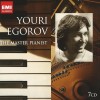
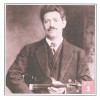
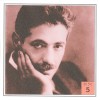
![Richter in Hungary, Volume 3 [2 CD]](http://static.classicalm.com/repository/disk-cover/small/881-img1316377899539479.jpg)
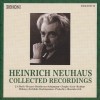
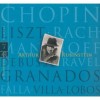
![Richter in Hungary, Volume 4 [2 CD]](http://static.classicalm.com/repository/disk-cover/small/883-img1316380039653451.jpg)
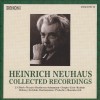
![Richter in Hungary, Volume 5 [2 CD]](http://static.classicalm.com/repository/disk-cover/small/885-img1316383729144080.jpg)
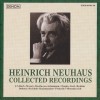
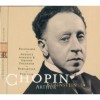
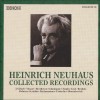
![Volume 05 - Chopin Concerti & Nocturnes [CD 1 of 2]](http://static.classicalm.com/repository/disk-cover/small/1399-img1324473955141852.jpg)
![Volume 05 - Chopin Concerti & Nocturnes [CD 2 of 2]](http://static.classicalm.com/repository/disk-cover/small/1401-img1324477518533279.jpg)
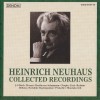
![Volume 06 - Chopin, 51 Mazurkas & 4 Scherzos [CD 1 of 2]](http://static.classicalm.com/repository/disk-cover/small/1403-img1324479362223618.jpg)

![Volume 06 - Chopin, 51 Mazurkas & 4 Scherzos [CD 2 of 2]](http://static.classicalm.com/repository/disk-cover/small/1405-img1324481206862430.jpg)
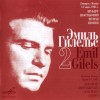
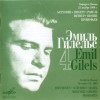
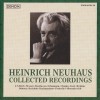
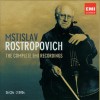
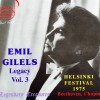
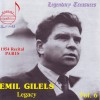
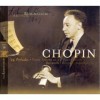
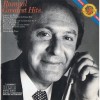
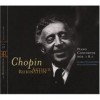

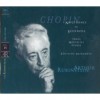
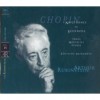
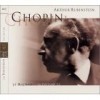
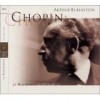

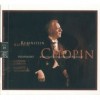
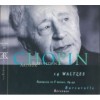
![The Heifetz Collection, Volume 19 [2 CD]](http://static.classicalm.com/repository/disk-cover/small/947-img1317413695600051.jpg)

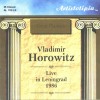
![The Heifetz Collection, Volume 1 [3 CD ]](http://static.classicalm.com/repository/disk-cover/small/715-img1315088819334029.jpg)
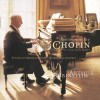
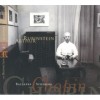
![The Heifetz Collection, Volume 6 [2 CD]](http://static.classicalm.com/repository/disk-cover/small/725-img1315427995644122.jpg)
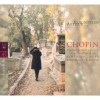

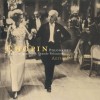
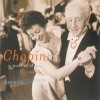
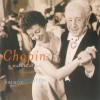
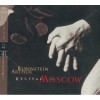
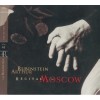
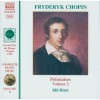
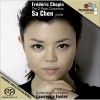


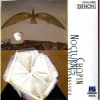

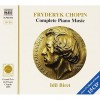



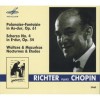
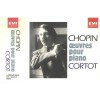


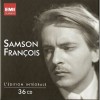
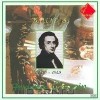
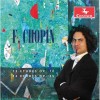

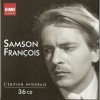
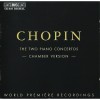

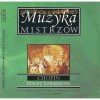
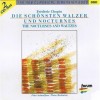

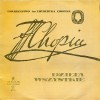
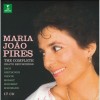

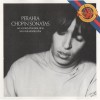
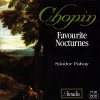
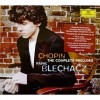





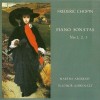


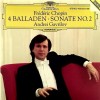
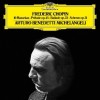



![Chopin - 26 Preludes & 4 Impromptus [Claudio Arrau]](http://static.classicalm.com/repository/composition-cover/small/24843-img1437470990538053.jpg)
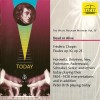


![Chopin: 4 Scherzi & 3 Impromptus [Yundi Li]](http://static.classicalm.com/repository/composition-cover/small/24844-img1437471419663664.jpg)
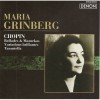
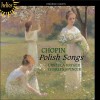
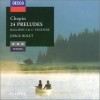

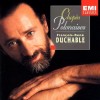
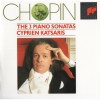

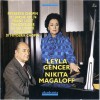


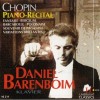
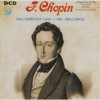



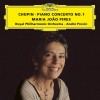


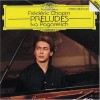





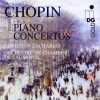

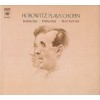
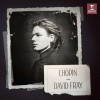


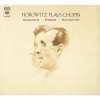


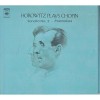


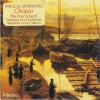
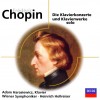
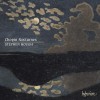


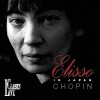

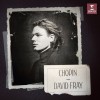
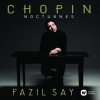



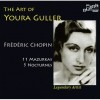
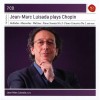
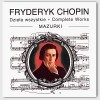
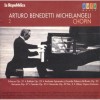
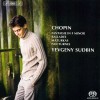

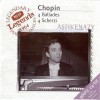

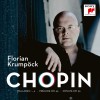
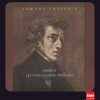
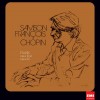
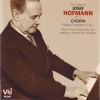
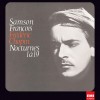


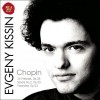
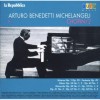
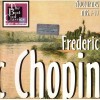
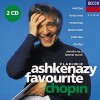


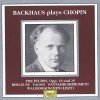

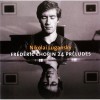

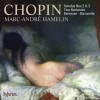
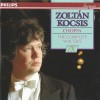






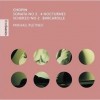
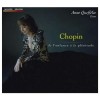
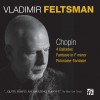
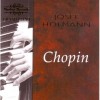


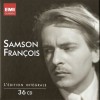
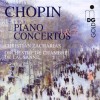

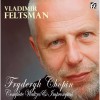



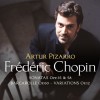
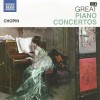
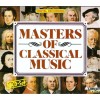


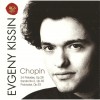
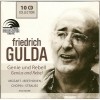

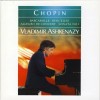


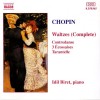
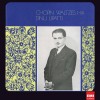
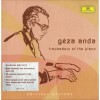
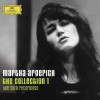

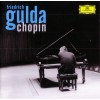

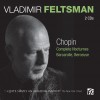
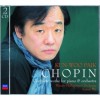
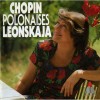
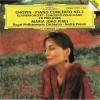

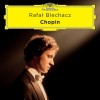
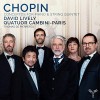
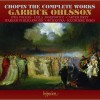


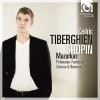


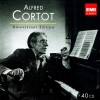
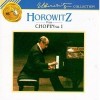

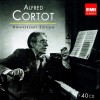


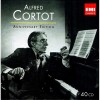
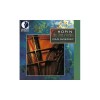
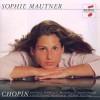
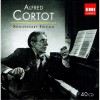
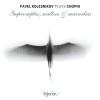
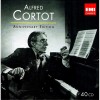

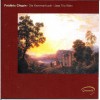
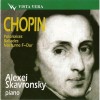


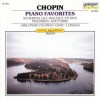

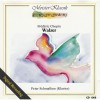

![Richter: The Authorised Recordings [Chopin]](http://static.classicalm.com/repository/composition-cover/small/21833-img1415365967563829.jpg)



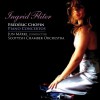

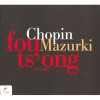
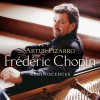
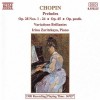



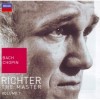
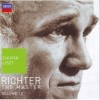
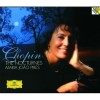
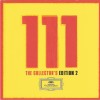
![Chopin - Les Mazurkas II [2CD's] - Patrick Cohen](http://static.classicalm.com/repository/composition-cover/small/42842-img1632493920142915.jpg)
